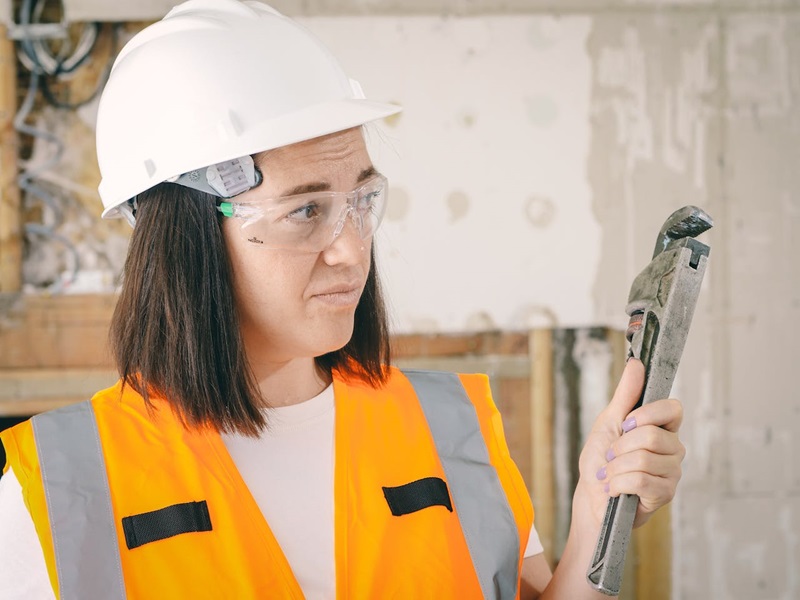Cracking the Code: The Essentials of Cleanroom Air Conditioning Systems Revealed!
Have you ever stopped to think about the intricate mechanics
that go into designing and operating a cleanroom? It's no secret that
cleanrooms have become an indispensable facet in various industries such as
pharmaceuticals, medicine, manufacturing, research, and more. But what makes
these spaces tick? Or more importantly, what keeps these spaces clean and
contamination-free? The answer lies in a unique, often overlooked essential:
Cleanroom Air Conditioning Systems.
Sounds complicated, doesn't it? The cyclical humming of the
air purifiers, the steady, tangible chill, and temperatures you could set your
watch by - these are significant elements that make for the ideal cleanroom
ambience. But how do these Air Conditioning systems come together to maintain
the integrity of the cleanroom environment? What elevates them from your basic
home or office air conditioning systems? And how do they affect the overall
functionality of a cleanroom?
This long-form exposition is aimed at peeling back the
layers, broadening your understanding and appreciation of the complexities, and
perhaps, unknown aspects of Cleanroom Air Conditioning Systems. Prepare to
journey within these spaces of science, as we delve into their integral
component - Air Conditioning Systems - and unravel their mechanisms, features,
benefits, and drawbacks.
What Exactly is a Cleanroom?
Cleanrooms are central to certain sectors, where even the
smallest disruption – such as a speck of dust or a swift fluctuation in
temperature – can bring catastrophic consequences. Therefore, a stringent,
highly controlled mechanism, like a Cleanroom Air Conditioning System, is
pivotal in maintaining the all-round stability of the environment.
Cleanrooms are often graded according to their cleanliness
levels. The art of achieving and maintaining this cleanliness level is
multifaceted, yet one of the core components is the Air Conditioning System.
So, what sets a Cleanroom Air Conditioning System apart from a standard one?
The answer lies in its intricacies, which brings us to our next point.
The Intricacies of a Cleanroom Air Conditioning System
Here we dive deeply into how these specialty Air
Conditioning Systems function. Cleanroom Air Conditioning Systems are designed
to take air management to the highest notch. It encompasses elements like
temperature control, humidity regulation, particulate filtration, air pressure
control and air distribution patterns, all of which a standard Air Conditioning
System may not possess.
An optimised Air Conditioning System in a cleanroom means a
lower risk of contamination. These systems not only eliminate harmful
particulates but also ensure the environment is at equilibrium, creating a safe
haven for the respective tasks to be undertaken.
Moreover, deviations in temperature and humidity can morph
materials, taint products, and lead to false readings in a cleanroom. Herein
lies the essence of a Cleanroom Air Conditioning System – to preserve the
sanctity of the cleanroom environment.
The Benefits of Cleanroom Air Conditioning Systems
The advantages of a Cleanroom Air Conditioning Systems are
many. A step up from standard A/C units, these high-end systems offer precision
like non-other and it is their precision that helps maintain the integrity of
the cleanroom.
Cleanrooms ascertain a high level of cleanliness, and the
air conditioning systems are pivotal in achieving this. The filtration and
elimination of particulates, micro-organisms, and other contaminants make a
Cleanroom Air Conditioning System a non-negotiable component.
Another merit is the stringent regulation of temperature and
humidity levels. The prevention of temperature and humidity fluctuations, which
could otherwise mar product quality is largely thanks to these Air Conditioning
Systems.
Considerations and Setbacks
As beneficial as these systems are, there are a few
drawbacks and considerations worth acknowledging. The high operational and
installation costs, constant maintenance, potential energy consumption, and
formidable prerequisites for running them smoothly are potential drawbacks.
Knowing these setbacks can help you plan and strategize
better, and also streamline your expectations. It’s important to see the
complete picture before you decide to invest in a Cleanroom Air Conditioning
System.
Future Trends and Predictions
The future holds promising growth for progression, even
within the niche of Cleanroom Air Conditioning Systems. Advancements in areas
such as energy efficiency, automation, and smart technology integration are
projecting an exciting future for these systems.
The integration of automation in the HVAC industry is
shaping a more efficient and manageable system, promptly diagnosing faults and
issues that could result in potential contamination.
Conclusion
Cleanroom Air Conditioning Systems are more than just temperature regulators. They are the silent protectors of a cleanroom
environment, ensuring cleanliness, safety, and unvarying atmospheric
conditions. Even though they come with a few challenges, the benefits far
outweigh any drawbacks. With advances in technology, we look forward to
witnessing the fascinating evolution of these systems that are so integral to
their respective industries.
As we have seen, detailed understanding and appreciation of these Cleanroom Air Conditioning Systems can lead to cherry-picking the right system for your requirements and regulating your cleanroom in the best way possible. After all, understanding the foundations will always lead to stronger and more efficient structures.





.jpg)











.jpg)


